As an Amazon Associate, I earn from qualifying purchases with no additional costs for you.
When it comes to wine, you have probably heard a wine aficionado say that ‘Aged wines are always better.’ If you have ever been lucky enough to taste an aged wine, you would know they do have a significant difference in taste and quality. You may be wondering how you can store wine from the comfort of your home.
When storing wine long-term, there are 8 steps you should follow:
- Make Sure the Wine is Placed in a Dark Area
- Keep the Wine Away from Vibrations
- Always Store Wine on Its Side
- The Temperature Should be 45-65 Degrees Fahrenheit
- Make Sure the Humidity Level Stays between 50% to 70%
- Avoid Storing Wine in the Fridge
- Make Sure There is Air Circulation
- Keep the Area Clean
If you’re ready to try your hand at storing wine long-term, then you need to know how to do it the right way. Storing wine the wrong way can lead to a wine that goes bad.
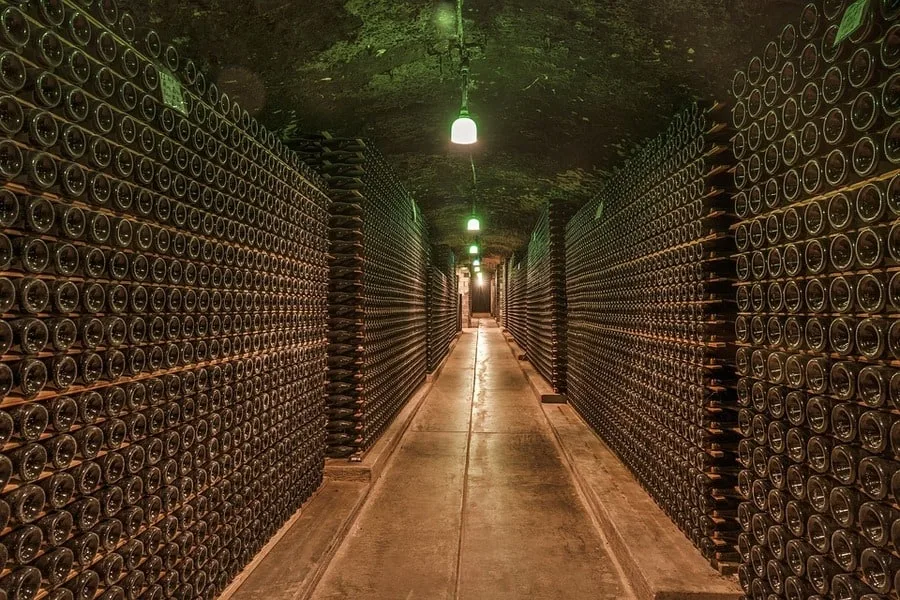
TIP: If you want to check out the best refrigerator for wine storage, I recommend trying out the Avation (18 bottles) compressor refrigerator with Wi-fi smart app control cooling system. You can find this refrigerator by clicking here (Amazon link).
Methods and Steps to Store Wine Long Term
If you’re ready to try your hand at aging wine, you should know it’s a process that requires a very specific environment. Wines are picky about how and where they age, so you need to make sure you are placing them in an area where they can thrive. The following steps are the 8 steps to storing wine long-term.
1. Make Sure the Wine is Placed in a Dark Area
One of the biggest negative impacts on wine is light, sunlight in particular. Light can degrade wine over time, so you must keep it away from all types of light. A wine cellar is an excellent option for storing wine because it will keep light away from your wine.
However, if you don’t own a wine cellar and do not have access to one, you are not completely out of luck. You have the option of placing your wine in a cool, dark closet or basement that is void of light but still has the ideal temperature and humidity (which we will discuss further in this article).
If you can’t find an area in your home that is free of light, then the final option is to consider wrapping the wine in a cloth to make sure the light can’t reach it.
The cloth should be wrapped lightly around the bottle. You may also place the wine bottles inside of a box and close off the top so no light can penetrate it.
TIP: To view my complete and Do and Don’t Checklist for Wine Storage, check out this article I wrote. It goes into detail what factors are important and which ones you need to avoid completely.
2. Keep the Wine Away from Vibrations
This one may have you confused at first, but the simplest way to say this is to keep your wine away from the washing machine and dryer and any other type of vibrating machinery. This is because vibrations can cause your wine to degrade over time.
The simplest way to avoid this is to stick to an area that is dark and far away from any type of machinery. If you’re storing in a basement where your washer and dryer are placed, then you need to make sure that the wine is far enough away to not be affected by the vibrations.
3. Always Store Wine on Its Side
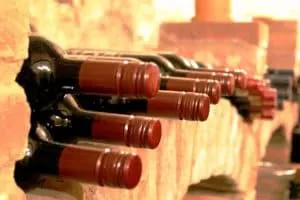
You might have heard someone tell you that it ‘doesn’t matter‘ if wine is placed on its side and that it’s nothing but a myth. However, this is only true if you are storing wine for less than 6 months.
If you are planning to age your wine for the long term, then you must always make sure that the wine bottles are being stored on their side.
Why must they be placed on their side for long-term storage? When wine bottles aren’t stored on their side, the corks can dry out. This leads to oxidation of the wine at a rapid pace, which ultimately leads to the wine going bad.
By storing a wine bottle on its side, there will always be constant moisture on the cork, which helps to resolve this issue. The part of the cork that isn’t being touched by actual moisture will find relief in the humidity levels that you’re setting.
Another reason to store wine bottles on their side is that it saves space. This is especially true in smaller areas, such as a wine cellar below the kitchen countertop, where space may be limited.
However, you always want to make sure that the bottles are easily accessible and you don’t have to move one to reach another one. Leaving the bottles alone as much as possible will help them in the overall aging process.
TIP: To learn more about why you should store wine bottles on their side, as well as when you should store wine bottles vertically, check out this article I wrote.
4. The Temperature Should be 45-65 Degrees Fahrenheit
The area in which your wine is being stored should have a constant temperature of 45-65 degrees Fahrenheit. This is a simpler task for those who are opting for a wine cellar, especially one that is located below ground.
However, any type of area you are holding your wines should be checked often to ensure that the temperature is consistently cool.
Consistency in the temperature is maybe even more critical than the temperature itself. Make sure that the area stays between 45 and 65 degrees Fahrenheit at all times.
Anything higher or lower can have negative effects on the wine, such as:
- A wine that stays in warm temperatures over 65 degrees Fahrenheit is at risk of overly-oxidizing which can cause the wine to go bad.
- A wine that stays in too cold of a temperature, such as below 45 degrees Fahrenheit, will not be able to age properly. You also risk the wine freezing altogether, which could lead to the cork popping out completely and destroying your wine.
TIP: Some wines can be served at room temperature. Read this article to find out if you are serving wine correctly. Wine stoppers are a great way to preserve leftover wine. This article explains why.
There are areas in your home that can have the ideal temperature, such as a closet or a basement. However, if you can’t seem to find a place where the temperature is constantly cool, then you may need to consider purchasing a wine cellar. A wine cellar will allow you to control the temperature and ensure nothing bad happens to your wine while aging.
A wine refrigerator is an even better idea. To learn if wine fridges are necessary, check out this complete article on the topic I wrote. There’s also a common belief that since red wine doesn’t require as cool of storing temperature as white wine, that wine refrigerators are only good for white wine. That is a very important discussion topic that I address fully in this article.
TIP: Are you interested in buying a wine stopper? We’ve personally tried and recommend buying one of these wine stoppers (Amazon links):
- The Original Vacu Vin Wine Saver: Our top choice. Very easy-to-use wine stopper/saver. You can enjoy a glass of fresh wine whenever you want without worrying about wasting any.
- EZBASICS Wine Saver: Great alternative to Original Vacu Vin Saver. This wine stopper keeps the flavor of wine for up to one week.
- Champagne Stopper by MiTBA: Wine stoppers for sparkling wines are different. This wine stopper seals your bottle and increases the pressure so your beverage’s bubbles won’t go to waste.
5. Make Sure the Humidity Level Stays at 50% to 70%
Most places won’t have too much of a struggle staying at this humidity level. However, you need to make sure that it stays between 50% and 70%.
Purchasing a hygrometer (Amazon link) is recommended so you can check to see what the humidity levels are in the area in which your wine is being stored.
If you find that your home doesn’t have the right humidity to properly age wines, you can consider doing the following:
- Purchase a humidifier to place inside the room. This will ensure that there is enough humidity to keep the cork and your wine happy and aging properly.
- Add a dash of water to the area. The water will be able to act as a humidifier as it evaporates and is a decent cheap option for anyone struggling to reach that 50% to 70% goal.
Without the right humidity levels, your wine will fail. This is because, over time, if the humidity is too low, the cork is at risk of drying out.
On the other hand, if the humidity is too high, the wine may begin to mold. Either way, your wine will be ruined, so it is especially important to always make sure your space is around 50% to 70% humidity.
6. Avoid Storing Wine in the Fridge
Some people may hear the term ‘wine fridge’ and think it is acceptable to store their wine in their refrigerator with the rest of their food and beverages.
This should never be done, though, because a refrigerator is designed to keep things very cold, and this will not allow your wine to age properly.
The other major concern here is cross-contamination. Now, when you hear cross-contamination, you are likely thinking of hands that touch some type of raw meat and then go touch something else. But in this case, cross-contamination can occur between flavors.
For these reasons, you should never store your wine in a regular refrigerator. Instead, opt for a wine fridge that is specially designed to keep and store your wine for long-term aging.
Many wine refrigerators are small enough to fit under a countertop, but there are also larger ones that can be placed in a basement.
7. Make Sure There is Air Circulation
Another great tip for long-term wine storage is to ensure that the area in which your wine is being held has good air circulation. If you are using a wine cellar or wine fridge, this is easily accomplished by using a built-in fan.
This means that the owner won’t have to worry about struggling with air circulation since the unit takes care of the problem for you. However, if you don’t own a wine-specific unit, then you need to make sure the area has good air circulation on your own.
You may want to consider adding a small fan to the area. You want to make sure that the air circulation isn’t causing the temperatures to change or go too low, though, because this can damage your wine.
Good air circulation is a critical part of long-term wine storage because it will keep mold from growing in your wine while also ensuring no intrusive odors affect the flavor of your wine.
TIP: Corks are used to store leftover wine, find out the best methods here. Do you know that corks can go moldy? This article explains why.
8. Keep the Area Clean
One thing that may be overlooked is simply keeping your area clean, whether you are using a wine-specific fridge or cellar. Insects, mold, bad smells and spills, and so many other misfortunes can happen just about anywhere, and your wine storage area is no different.
Some things to keep in mind include the following:
- Clean often. Sweep the area or run through it with a damp washcloth to remove any dirt or dust particles that may have reached the area. While these things may not seem harmful to the wine, it’s best to keep the space clean and clear for proper aging.
- Clean up any wine spills. Accidents happen. If you find that one of your wines has sprung a leak or you accidentally dropped a bottle, it’s important to clean it up right away and make sure no leftovers are soaking on the floor.
- Don’t use harsh or scented cleaning agents. These types of cleaning solutions can ultimately pollute your wine, which means that your wine will be poured with an off taste and scent – and nobody wants to drink wine like that!
Recommendation box: Everything you need to enjoy your wine as much as possible. All recommended products are personally tested and regularly used by experts from this website (Amazon links):
> Ivation Wine Cooler – Energy-efficient wine cooler for 18 bottles with Wi-fi smart app control cooling system.
> Wine Rack – Beautiful, elegant wood rack for up to 7 bottles and the choice of vertical or horizontal storage.
> Durand Wine Opener – Classic vintage wine opener (we like all these classic staff).
> YouYah Iceberg Wine Decanter – The most beautiful and handy wine decanter we personally use.
> Bormioli Rocco Wine Glasses – A set of eight elegant and traditional wine glasses made in Italy.
> Vintorio Wine Aerator – Simple but really useful wine aerator for a reasonable price.
> The Original Vacu Vin Wine Saver – The best wine saver on the market in a package with two vacuum stoppers and two wine servers.
And if you want to become a true connoisseur of wine, we recommend reading the book Wine Folly: The Essential Guide to Wine (Amazon link), where you will find all the information you need about winemaking, wine varieties, flavors, and much more.
How Many Years Can You Keep a Bottle of Wine
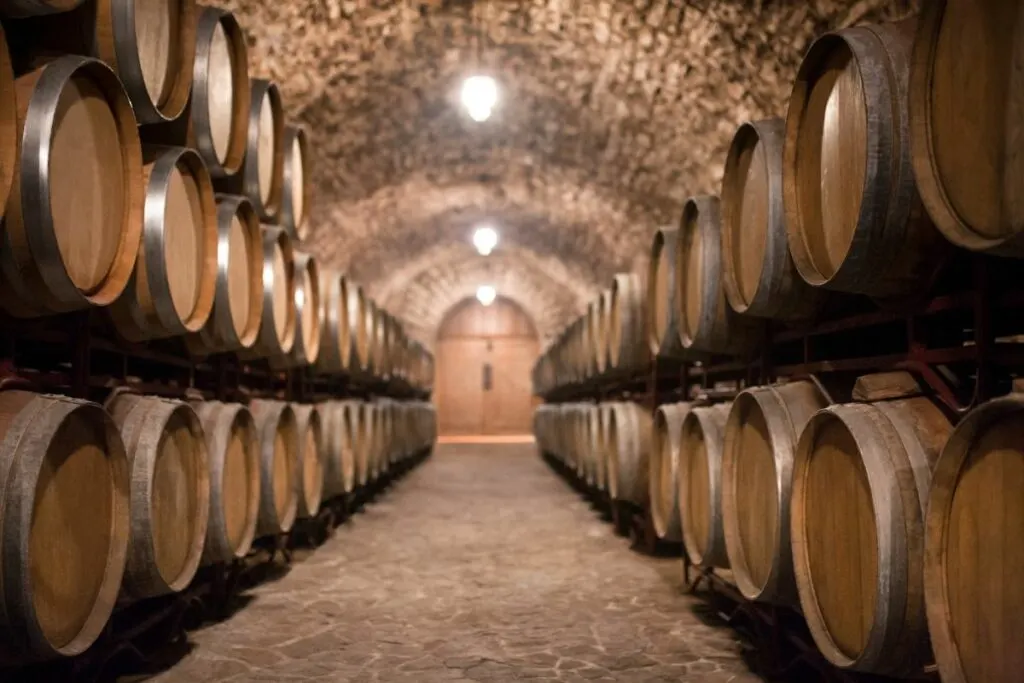
The length of time you can keep a bottle of wine in your cellar depends solely on the type of wine you are aging. Some can only last for a few short years, while others can push the limits and be stored long-term for over 10 years or more.
For the most part, though, it’s better to consume sooner than later. A good rule to remember when it comes to the long-term storing and aging of wine is the following:
- Almost every wine that is purchased for less than thirty dollars is not meant to be aged for too long. They are considered wine that should be consumed now, but in wine terms, this simply means that it should be drunk within the first five years of buying it.
Keeping a ‘cheaper’ wine aged for longer than 5 years can have a seriously negative impact on the wine. The wine will begin to deteriorate. This means that the flavor will ultimately change, and the wine itself will lose quality, leaving you with a rancid, undesirable wine that may end up in the trash bin.
- Premium wines that cost over thirty dollars can be stored for longer periods. Of course, every wine will be different when it comes to specific times of aging. If you are planning to age, it’s also important to follow the 8 steps above to ensure it’s done right.
Bottles of wine that are bought from high-end wineries, like those in Italy and Napa, California, are typically designed to be aged as well. It will ultimately come down to the type of wine you are purchasing.
TIP: This guide explains the differences between cheap and expensive wines, don’t miss it! What are the differences between wines from France and wines from California? Find out here.
Proper Length of Time to Age Various Kinds of Wine
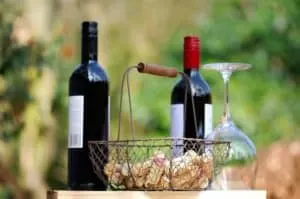
Knowing the proper time for aging different types of wines is crucial. Aging a wine for too long can result in a wine that has deteriorated and lost all its flavor and quality.
Here is a list of wines (source) and how long they should be kept in a cellar to age.
Wines You Should Drink Within 1 to 3 Years
Red Wine – Gamay, Zweigelt, Primitivo, Dolcetto, Box Wine, Beaujolais, Lambrusco
White Wine – Albarino, Assyrtiko, Cava, Chenin Blanc, Gewurztraminer, Gruner Veltliner, Melon de Bourgogne, Moscato, Pinot Grigio, Gris, Prosecco, Dry Riesling, Sauvignon Blanc, Torrontes, Verdicchio, Vermentino, Viognier, Vinho Verde
Wines You Should Drink Within 3 to 5 Years
Red Wine – New World Merlot, Barbera, Zinfandel, Petite Sirah, Pinot Noir, Garnacha, Monastrell, Negroamaro, Crianza Rioja, Cotes du Rhone
White Wine – Alsace White Wine, Arneis, Oaked Chardonnay, Oregon Chardonnay, Oaked S.A. Chenin Blanc, Garganega, New York Riesling, Semillon, Trebbiano, Oaked Sauvignon Blanc, Malvasia, Fiano
Wines You Should Drink Within 5 to 10 Years
Red Wine – Cabernet Franc, Syrah, Old World Merlot, Malbec, Grenache, Carmenere, Nero d’Avola, Pinotage, Aglianico, Tempranillo, Sangiovese-Based Wines, Chianti, Reserva Rioja, Super Tuscans, Montepulciano d’Abruzzo
White Wine – Oaked Gruner Veltliner, Kerner, Petit Manseng, Muscat, Encruzado, Oaked Albarino, Alto Adige Pinot Grigio, Sweet Loire Valley Chenin Blanc, Hungary Furmint, White Bordeaux, Sicilian Grillo, Burgundy Oaked Chardonnay, Chablis, Auslese German Riesling, White Cotes du Rhone, White Rioja, Verdicchio de Matelica
Wines You Should Drink Within 10 to 20 Years
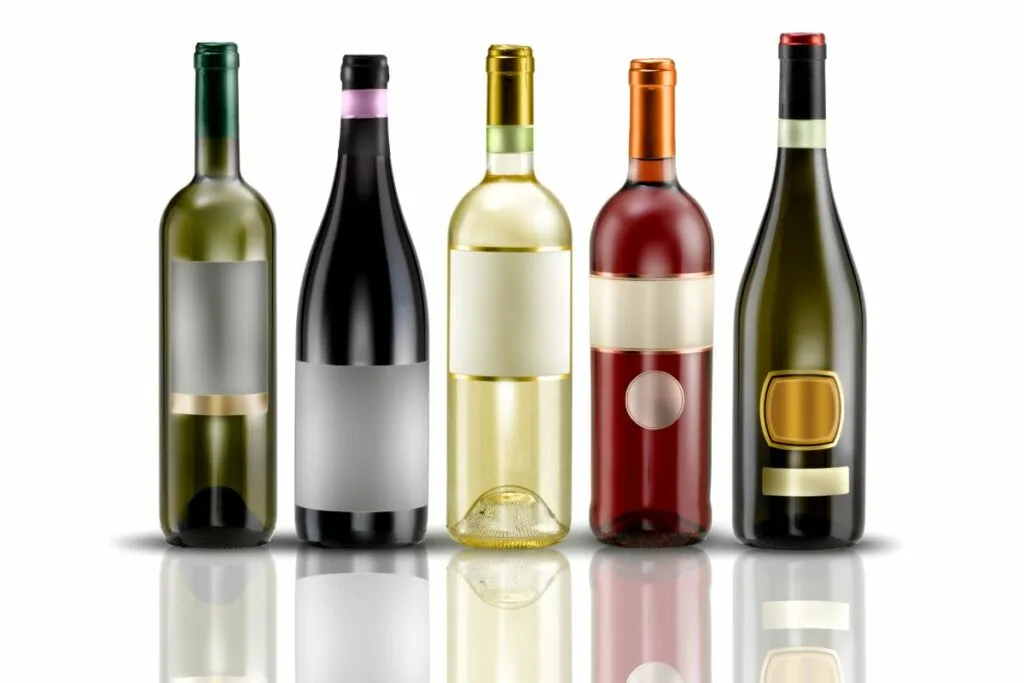
Red Wine – Nebbiolo, Tannat, Sagrantino, Cabernet Sauvignon, Tempranillo, Sangiovese, Amarone, Dulce Monastrell, Brunello di Montalcino, Barolo, Barbaresco, Red Bordeaux, Douro Reds, Bandol
White Wine – Chablis, Beerenauslese German Riesling, Hunter Valley Semillon, Ice Wine, Jura Savagnin, Late Harvest Riesling, Malvasia, Sauternes, Rutherglen Muscat, Vendange Tardive Alsace White Wines
As you can see, aging wine is very specific. Not only is there a right way to properly store and take care of aging wine, but there are specific time frames that any wine ager needs to remember when it comes to keeping their wine long-term. Following these simple steps and time guidelines will ensure you can enjoy delicious, succulent wines.
Why You Should Want to Store Wine Long Term
There are many benefits associated with aging wine. If you’ve consumed aged wine before, then you know there is a significant difference from wine that’s bought at the store and consumed the same night.
If you’re new to the wine world and wondering why you should consider storing wine long-term, here are three great reasons:
- The flavor enhances.
- The texture becomes more desirable and smooth.
- The color changes.
What Happens to the Flavor?
When wine is ‘young’, meaning that it hasn’t had any time to age in a cellar and is essentially placed in a bottle and sold without being stored away, it comes with primary flavor.
Most of these flavors will be nice but lack a certain amount of depth. Some of the flavors you will notice right off the bat include citrus or plum, while some wines offer secondary flavors like vanilla or butter.
However, when wine ages, different flavors start to erupt during the development of the wine. Every wine will have a different combination of flavors.
For instance, fruity wine that had a sweet taste, in the beginning, might end up with a drier taste that resembles dried fruit. On the other hand, young wines that had a bold, fruit character would become more subdued while other tertiary aromas develop.
The cause for these changes in wine is the acidity and tannin softening over time. The acidity and tannin that previously preserved the flavor of the wine now take a back seat as new flavors arise. As they begin to react, a series of new compounds are discovered and formed.
During this process, other compounds can completely dissolve and find themselves combining at a later time with an altered flavor.
Does this mean that wine is constantly changing?
Yes. Wine is constantly changing during the aging process. Every time you open up a bottle of wine you will be catching it at a certain stage in its ‘life’. This means that a flavor you taste now may be different in the same type of wine a few years from now.
This is why so many people find it thrilling to taste wines that have aged for a certain amount of time. You truly never know what you are going to get, making it a unique discovery every time.
To learn how to store wine after opening and how to make it last just a little longer, check out this article. You’ll learn how to maximize the flavor and notes of your wine days after opening.
What Happens to the Texture?
There is a major difference in texture when a wine ages, too. Think about a white wine that may have been dry when you first tried it. When they are young, white wines tend to have a crisper texture that many find desirable.
However, after time, white wine will become oily to a certain degree, diminishing any type of crisp notes that may have been there initially.
Red wines tend to be bolder when you try them at a young age. This type of wine will become increasingly smoother as it ages, which is why it is a top pick for someone choosing what type of aged wine to sip.
What Happens to the Color?
The most noticeable difference between a young wine and aged wine is the color. As the wine ages, oxidation occurs, which changes the color of the wine.
The color-changing process is pretty simple and will go something like this:
- Red wines will start with a bold, ruby-red hue. However, over time, the redness will begin to fade to a brick-red color. The end-stage will be a tanned leather color that is more brown than red but still has hints of redness.
- White wines start with an off-white shade that may even appear lemony. As time goes on, this type of wine will gain colors. The next step is a golden hue, which is followed by a deep, succulent amber shade.
How quickly a wine changes colors will ultimately depend on how much oxygen is being released into the bottle.
For the most part, this is a very slow process because the cork keeps most of the oxygen from making its way inside the bottle. However, this slight amount of oxygen seeping through will cause the color change over time.
TIP: Find out here why your wine has turned brown and how to fix it. What happens when you mix red and white wines? The answer will surprise you!
How Can You Tell if Wine Has Gone Bad?
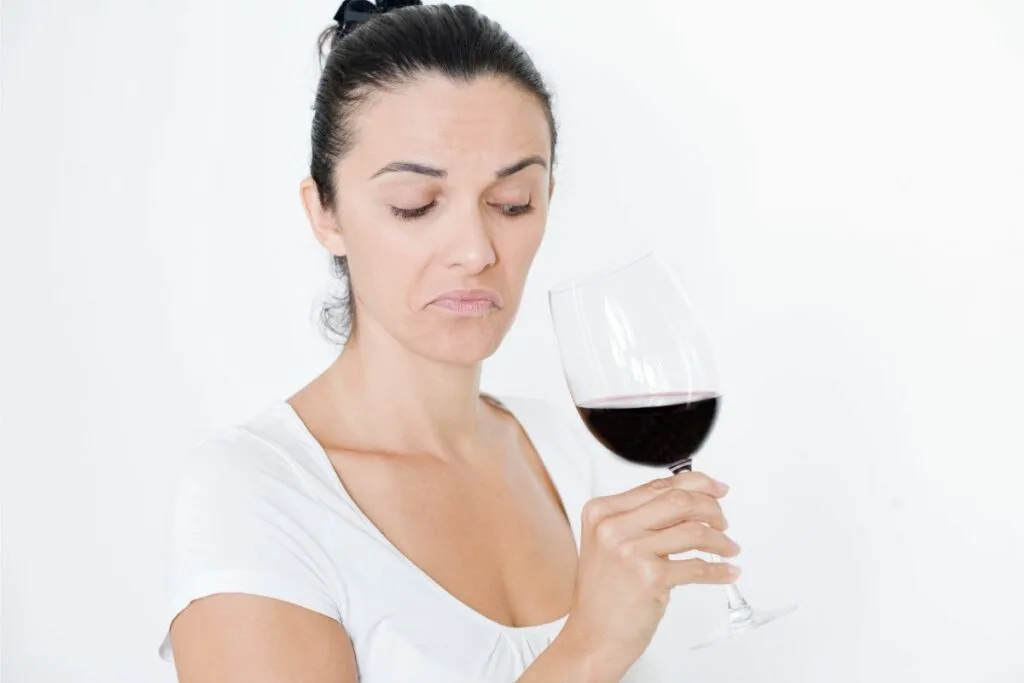
If you are not used to aging wine, it might be challenging to decipher whether or not your wine has gone ‘bad’ when it comes time to pour.
If you notice any of these changes in your wine, it’s best not to consume it:
- It doesn’t smell good. If you notice that your wine has an ‘off’ aroma, such as a heavy vinegar scent, then it’s a sign your wine has gone bad. You may also notice a raisin scent, which isn’t a good sign either.
- The red wine has a sweet scent. This may come as a surprise, but red wine that is not dessert wine should not smell sweet. If it does, then you should not consume it because it has gone bad.
- You notice the cork is pushed out further than it should be. When the cork isn’t sealed properly and is pushed out from the top a bit too far, it means that the wine has expanded due to heat. This makes the wine undrinkable.
- It tastes somewhat fizzy. If you are not drinking sparkling wine, your wine should not be fizzy. If your wine is fizzy, it has undergone a second fermentation. It is safe to drink, but maybe not enjoyable
- It tastes bad. Perhaps the biggest indicator is that your wine simply tastes bad. You can usually tell when your wine’s gone bad if you cringe when you drink it. It may have an acidic flavor or taste like a paint thinner. Either way, a wine that has gone bad will be highly unenjoyable.
Conclusion
Storing wines long-term is much more particular than people may think. There is a specific way that wines must be kept, including consistent temperatures, humidity levels, and the absence of light.
Aside from proper storage, each wine also comes with an aging time limit that must be followed. The best option is to choose a wine cellar or wine fridge for storing and aging wines.
TIP: Check out this page for a complete list of wine products and accessories I love. You’ll find my recommendations for wine refrigerators, decanters, and aerators and the best place to buy wine online. Click here to see the complete listing.
